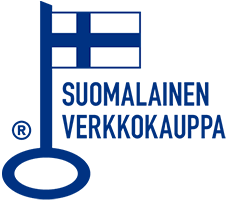This contributed volume includes articles on sport and gender written by leading scholars in their areas of expertise. Part I demonstrates that 1) the relationship between sport and gender has not developed in a smooth, uncontested, or linear way that always privileges all males and always discriminates against all females, and 2) that the relationship between sport and gender can best be understood sociologically by tracing the intersections
between sport, gender, and other ways that Canadian life has been -- and remains - stratified, such as social class, age, race, ethnicity, and sexuality. In Chapter 1, Melissa Parker and Philip White
explore the chronological development of theoretical frameworks addressing both the gendering of sport and what it means to be gendered in sport. Michael Atkinson argues in Chapter 2 that there is a strong link between types of research methods used and knowledge claims made by researchers. In 'Cultural Struggle and Resistance: Gender, History and Canadian Sport', M. Ann Hall traces the early moments of organized women's sport in Canada to show that women's sport in Canada is built on far
stronger foundations than is often assumed. In the following chapter, Kevin Wamsley argues that not all men were privileged by early Canadian sport practices. For instance, he outlines the process through
which sport became an arena for the construction of particular types of masculinity, notably masculinities that helped reinforce the dominance of powerful groups of men. Beginning from the premise that Canadian society -- and thus Canadian sport -- is far from 'classless', Peter Donnelly and Jean Harvey provide numerous examples in Chapter 6 to show that there have been major social class and gender inequalities throughout the history of sport. Again, we are reminded that gender is a complex
and multidimensional phenomenon that can best be understood if we trace power differences not only between different groups of men and women but also between different versions of 'masculinity' and
'femininity' associated with particular social groups, social classes, and social settings. Part II of this book focuses on the work currently being done by leading researchers in the area of sport and gender in Canada on a broad spectrum of sport-related topics. The chapters reflect a variety of theoretical standpoints and methodological procedures. These chapters emphasize the need to study gender in a way that is not only non-categorical but perhaps moves beyond the
distributive level towards understanding how sport assumes particular forms at particular historical junctures and grows out of relations of power that are determined culturally and reinforced
ideologically. In Chapter 6, Sally Shaw and Larena Hoeber show how the prevalence of gendered discourses hinders the achievement of gender equity in Canadian amateur sport organizations. The idea that there is no singular masculinity and femininity operating within Canadian sport is developed in Chapter 7 in which Philip White and Kevin Young review research findings on gender and rates and types of sport injury. In Chapter 8 Caroline Davis observes that some femininities
are more closely associated with body image disorders than others and discusses the biological, sociological, and psychological factors acting on the relationship between sport, physical activity, and
eating disorders. Chapter 9 by Peter Donnelly ('Who's Fair Game? Sport, Sexual Harassment, and Abuse') identifies how power differences tend to exist at the heart of abusive and exploitive sport-based relationships. Notions of power relations are also central to Chapter 10 written by Patricia Vertinsky and Sandra O'Brien Cousins on the effects of gender on participation in sport among older Canadians. Specifically, their chapter demonstrates how older women are disadvantaged relative to men
when it comes to involvement in sport and physical activity. Victoria Paraschak's chapter on sport and Canada's First Nations peoples (Chapter 11) provides vivid examples of how unequal gender relations
are created and reproduced over time. Chapter 12 calls for a collapsing of the rigid binary categories of hetero/homosexuality on the grounds that these are used to preclude full and equal gay and lesbian participation in sport. Identifying patterns of exclusion from participation in sport and physical activity is also the focus of Chapter 13 which is authored by Wendy Frisby, Colleen Reid and Pamela Ponic. This chapter demonstrates how a combination of poverty and
prevailing municipal recreation department policies seriously limit the opportunities of many women from active recreation. In Chapter 14, Brian Wilson explores how the media reinforces taken-for-granted
understandings of gender-appropriate orientations toward the body and sport. In the following chapter, Jamie Bryshun and Kevin Young provide some of the first substantial evidence for the routine involvement of female athletes in initiation (hazing) rituals in Canada and conclude that power relations between neophyte and veteran female players may be just as aggressive, coercive, and high-risk as those occurring on male teams. Sport and Gender in Canada reflects a growing
body of work highlighting the diversity that exists among Canadian sportswomen and sportsmen in terms of factors such as age, race, heritage, sexuality, and social class. To speak of a 'generic'
sporting masculinity or femininity, or indeed of a generic sporting experience, simply does not do justice to the complexity of Canadian sporting life.






